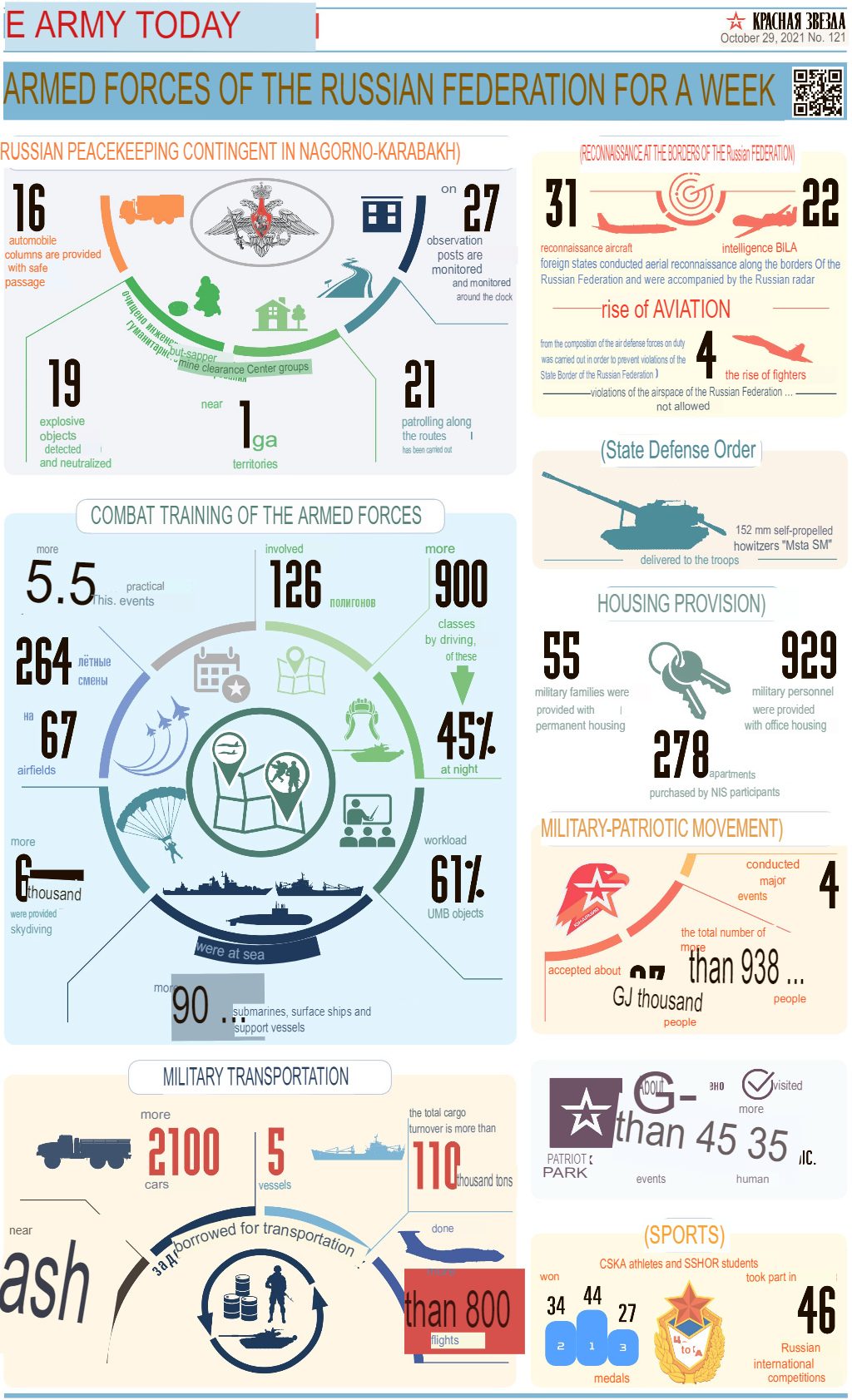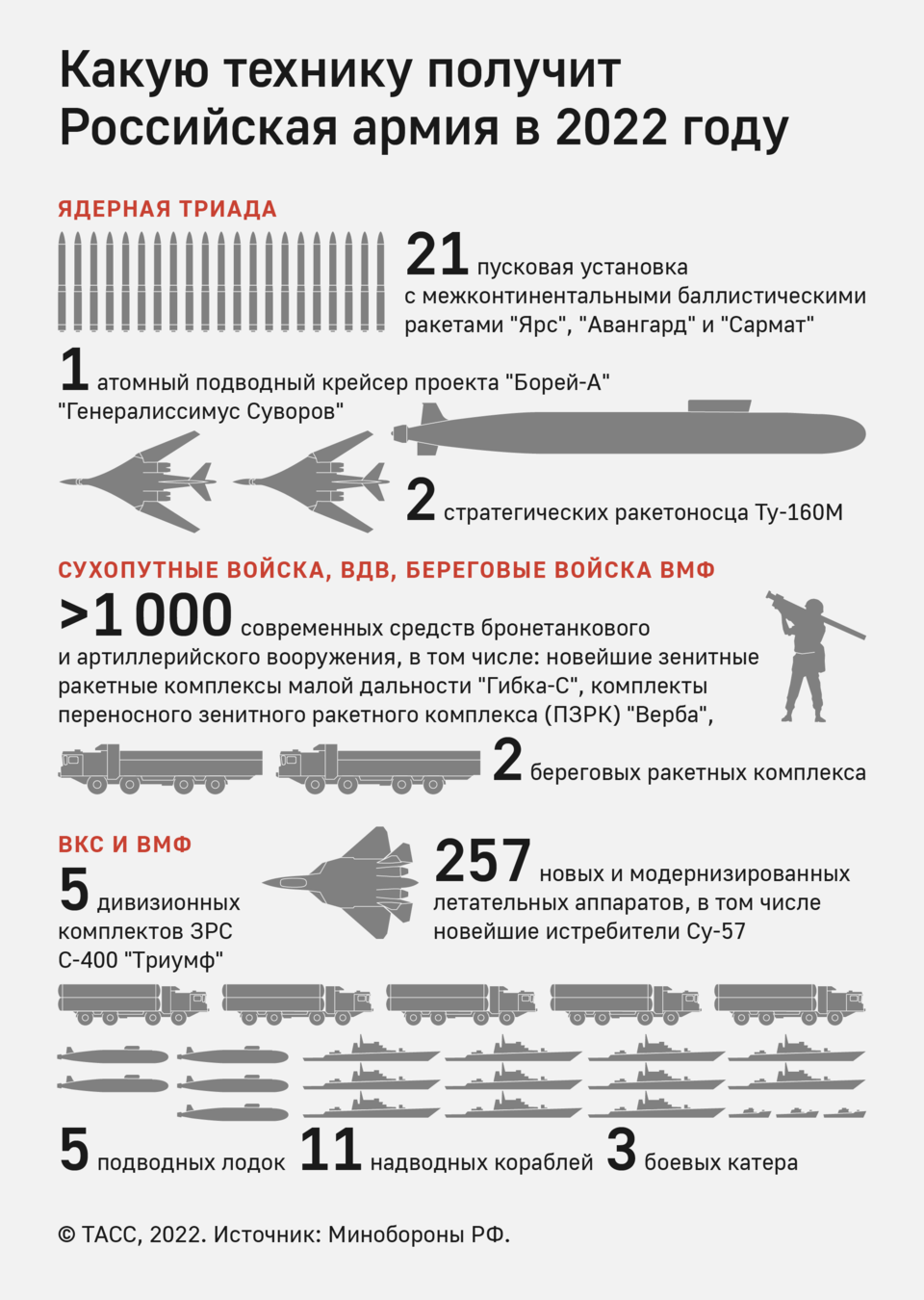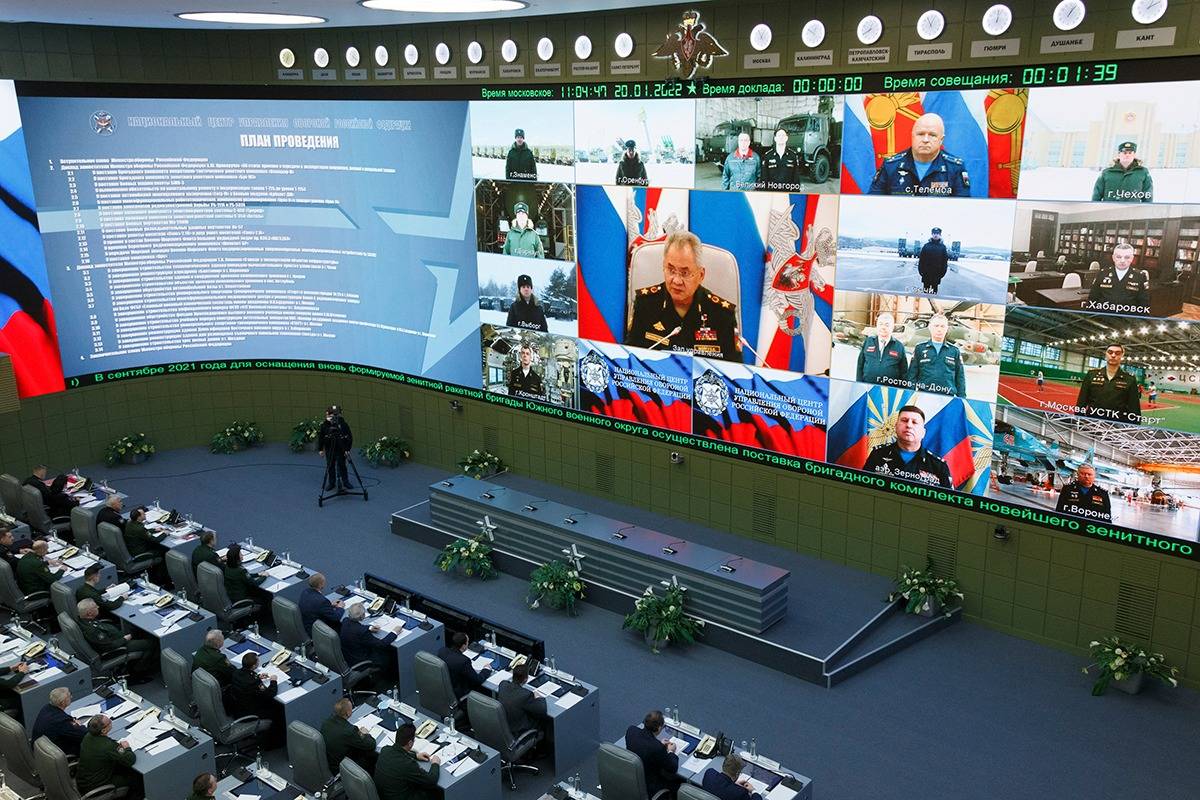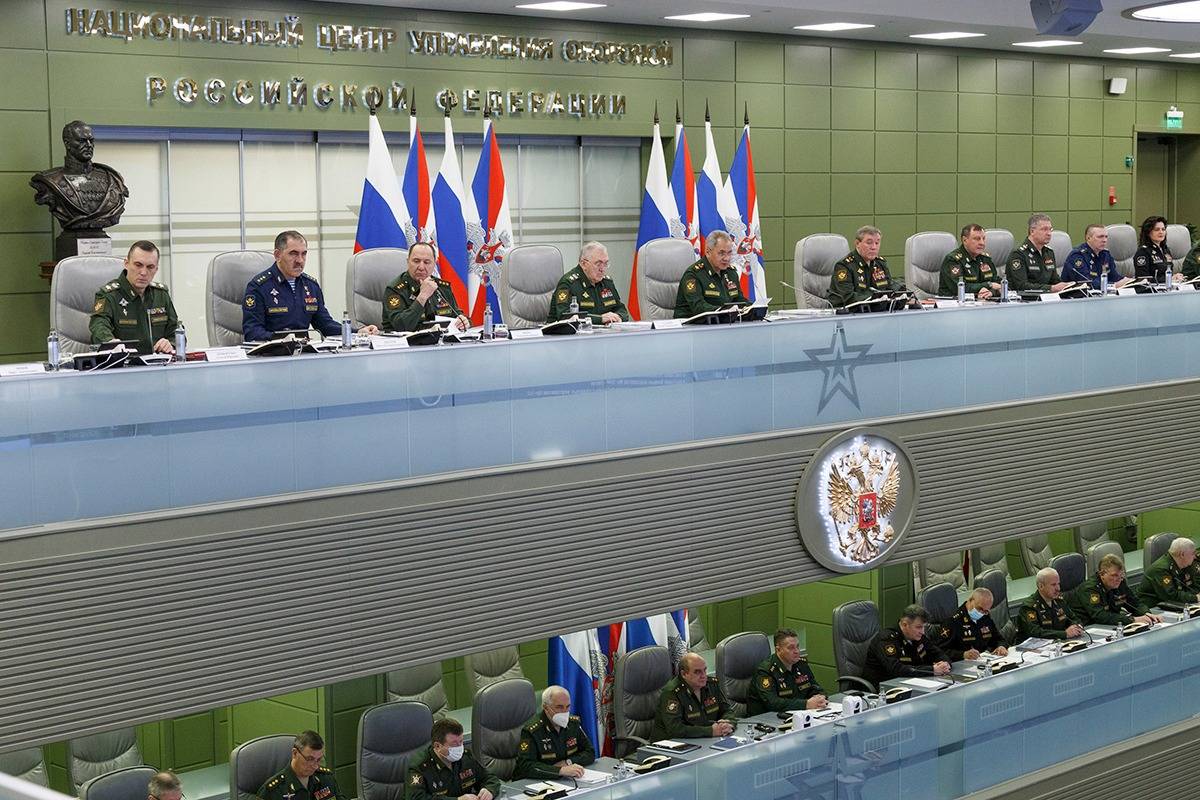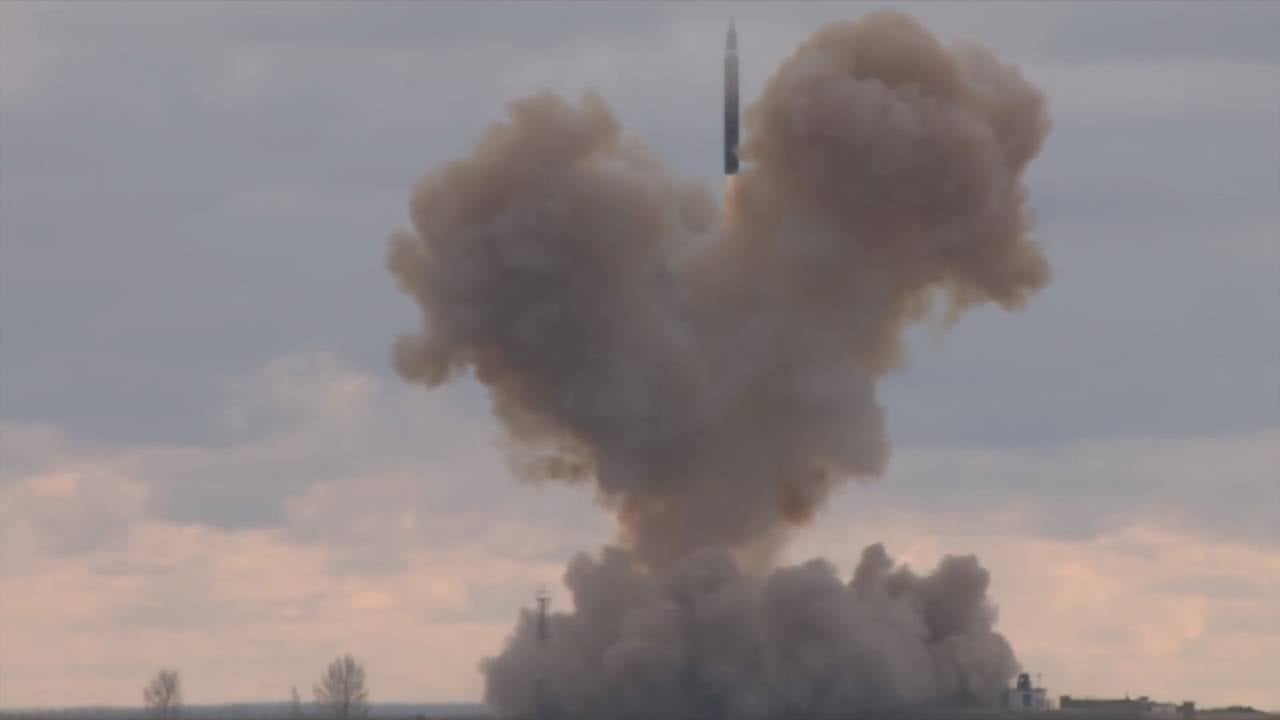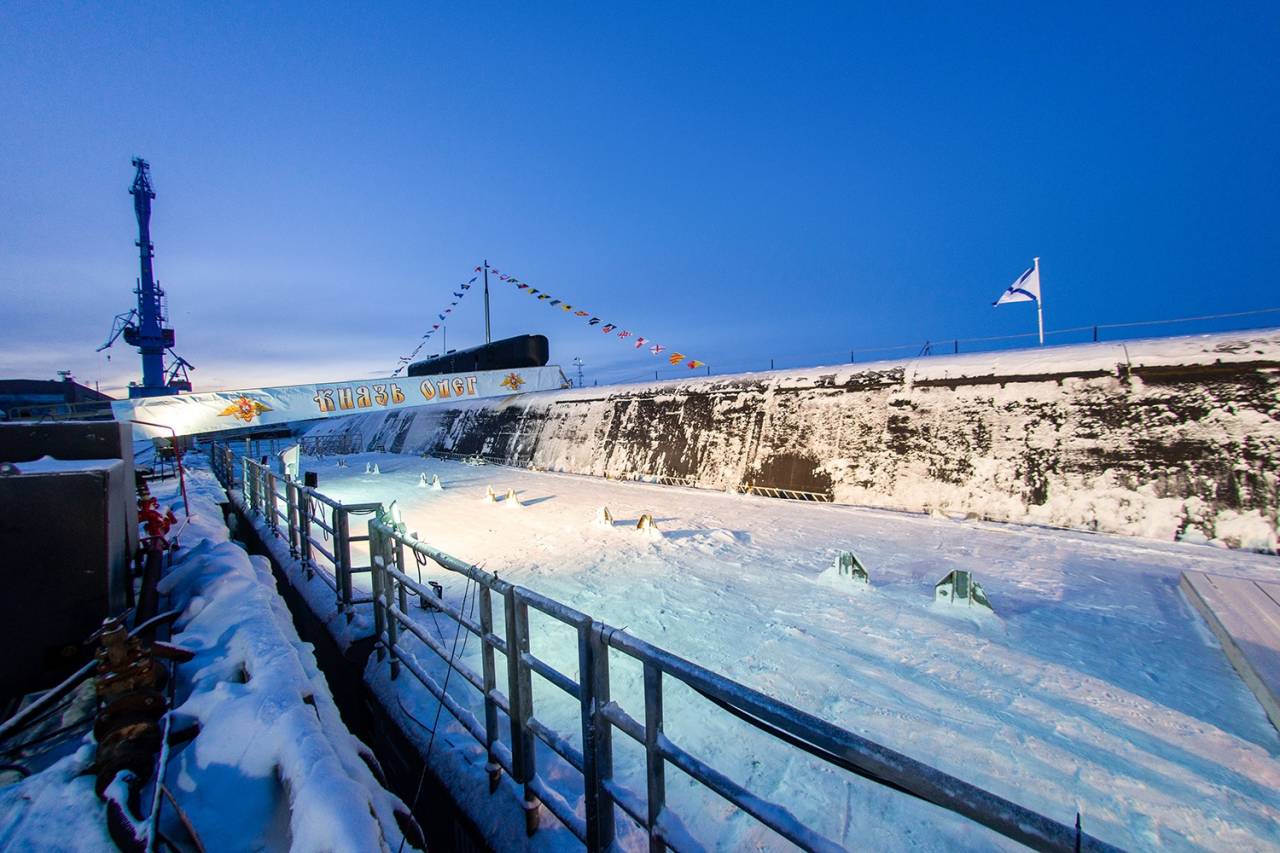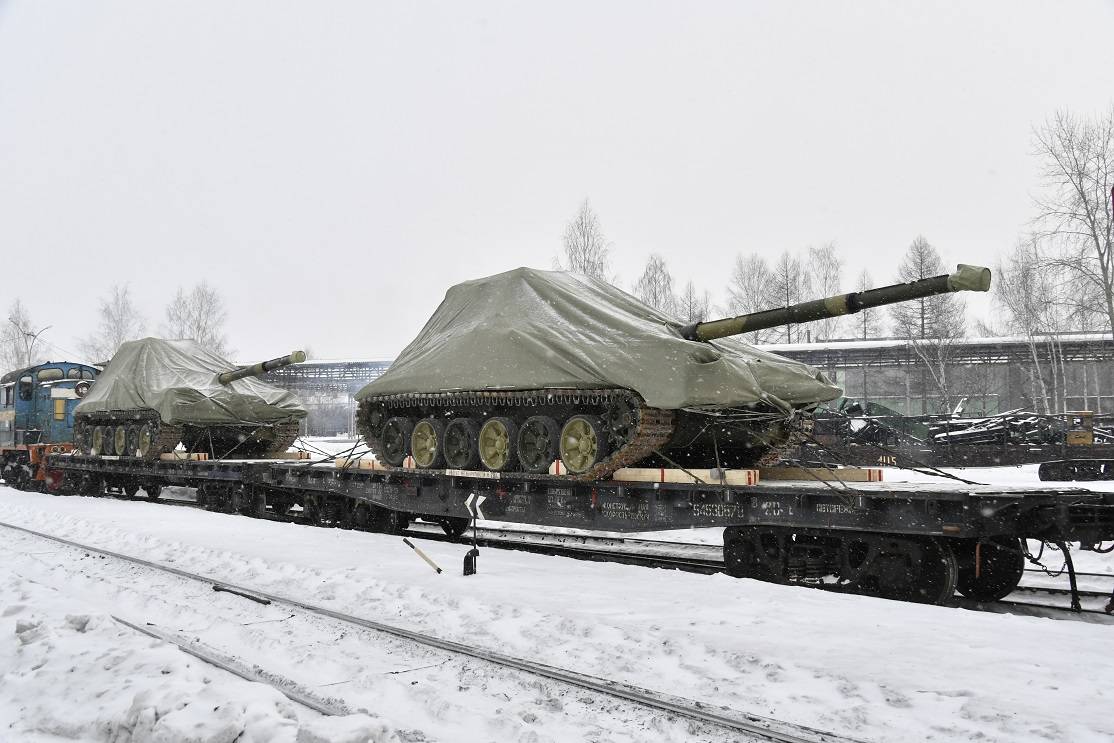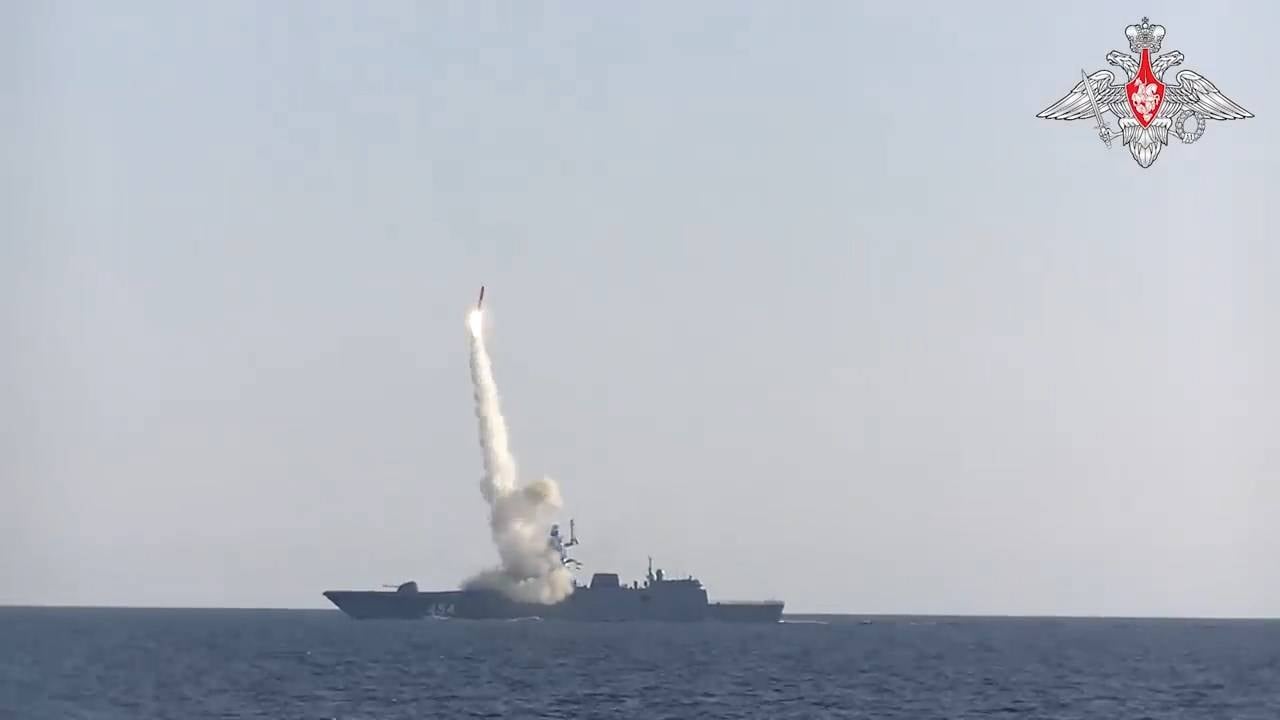First Deputy Chairman of the Board of the Military-Industrial Complex: the new weapons program will change the face of the Russian army
Moscow. December 9. INTERFAX-The Russian army will receive a line of advanced unmanned aerial vehicles in the coming years, and the Armata tank has already received new ammunition, First Deputy chairman of the Board of the Military-Industrial Commission Andrey Yelchaninov said. In an interview with Interfax special correspondent Alexander Belov, he spoke about the new State armament program, Sea Launch and the fate of the Il-112B.
- Andrey Fedorovich, in November the president held traditional military meetings in Sochi. What issues were discussed and what tasks were set for the industry?
- In addition to the general assessment of the state of affairs in the armed forces and the military-industrial complex, the countries discussed the prospects for the development of various types of unmanned aircraft. The report was made by the Commander-in-Chief of the Aerospace Forces, Army General Sergei Surovikin. In fact, the military acquainted the Supreme Commander-in-Chief with their vision for the development of this sphere, presented him with a potential range of unmanned systems that are planned to be put into service both in the near future and as part of the new State Armament Program for 2024-2033. Their approach was supported.
The meeting was attended by General Director of the Almaz-Antey Concern of East Kazakhstan Region Yan Novikov and head of the KTRV Boris Obnosov, who spoke about the prospects for the development of air defense and missile defense systems, new samples of hypersonic weapons, including technological features of their creation, and the need to develop a bench and range base.
In addition, they discussed problematic projects. These are the main results that can be disclosed publicly.
- And what kind of drones can be seen in the troops in the near future?
- Deliveries of attack drones, specialized drones that will solve the tasks of radar surveillance and guidance are planned. There will also be unmanned aerial vehicles that will help solve the problems of overcoming enemy air defenses. In general, different nomenclature, at least six types. The emphasis is placed on the development of heavy drones, for the use of which the VKS runways will be used.
At the next such meeting, which is scheduled for May 2022, the Defense Ministry will report on its approaches to changing the structure of air defense and missile defense in our country, and the tasks for UAVs will be clarified accordingly. The volume of deliveries will appear in 2022-2023, when the Ministry of Defense will prepare the parameters of the new GPV.
In addition, they discussed the creation of weapons samples for UAVs. This will include high-precision weapons, unguided weapons, bombs, and missiles.
- Is the Russian Federation ready to introduce new drones to the foreign market and compete with the Turkish Bayraktar?
- We are already actively competing. To say that their samples are superior to ours is incorrect. At the meeting, the President approved the approach of industry representatives on the need to actively enter this market. Immediately after the meeting in Sochi, some samples of complexes with UAVs ("Orions") were demonstrated in Dubai at the air and space salon. We also have other types that complete the tests, we are not inferior to the Turkish equipment. I do not rule out that the marketing policy in this area may be more aggressive. But we must not forget about the sanctions regime. We will fight for every niche, for every offer.
- How is the implementation of the Okhotnik program going? Will the drone get a flat-nozzle engine?
- The appearance of the Hunter-type drone has been determined, and the corresponding test stages are underway. If there is a need to make changes based on the results, the drone will be finalized. One of the technical solutions that is currently being considered is the so – called flat nozzle. But so far, this is just a design proposal that needs to be worked out. The deadline for deliveries of drones to the troops remains-from 2024.
- At what stage is the new State armament Program being developed?
- The formation of the GPV takes place in three stages. At the first stage, in 2020, unified methodological materials were formed, analysis and assessment of possible threats and the economic situation were carried out. This stage has been successfully completed, all necessary decisions have been made, approved by the Board of the Military-Industrial Complex and reported to the Supreme Commander-in-Chief.
At the second stage, which this year was dedicated to, a unified system of source data was formed for program-targeted planning to ensure the implementation of military-technical policy and the transition to further steps. The main directions for the development of weapons and military equipment for a 15-year period were also developed based on forecasts for the development of equipment in Russia and in the world.
The next two years will see the third and main stage of the GPW formation, where specific proposals are developed on the composition, content, technical and economic indicators and activities of the program. At this stage of planning, the coordinating and unifying role of the military-industrial complex board comes to the fore.
The main customers within the framework of the GPV will form the so-called "presidential" range of weapons and military equipment, which will determine the future appearance of the armed forces and other military formations until 2033. Based on these tasks, we plan to form working groups on the main areas of the Military-industrial Complex board during 2022-2023: VKS, land grouping, Navy – there we will consider in detail the proposals of state customers, taking into account their needs and capabilities of defense enterprises.
Key – detailed analysis for each sample. Work not only with the main performers, but also with the main participants of cooperation. The preparation of production, availability of personnel, availability of technological equipment will be evaluated – the depth of immersion is quite large. The main task is to form a consolidated opinion on the possibility of implementing a specific sample in the interests of a specific customer, taking into account the capabilities of the industry for real terms and money.
We hope to reach the final version of the GPV at the end of 2023.
- Are there any innovations when creating a new program?
- We have engaged general designers, the Advanced Research Foundation to work on the new GPV as a source of forecast data, and not only that. The Fund has proven its worth and is able to operate in a rapidly changing environment. In addition, the GPV will immediately provide for the capital construction of military infrastructure facilities to accommodate weapons and military equipment. These tasks are interrelated, and everything should be coordinated when new samples are put into operation. First of all, these are promising models that determine the appearance of the Armed Forces of the Russian Federation. Mines, buildings, airfields-everything must be prepared.
- Have you determined the amount of funding?
- The position of the MIC Board is that the amount of funding for the new GPV should not be lower than the previous one. We defend this position. This target is at least 2.4 trillion rubles for 2024. We are discussing the amount of funding for the entire program until 2033 with the Ministry of Finance. There are two scenarios: "optimistic" (30 trillion rubles for a ten-year program) and "pessimistic" ( 20 trillion rubles for the same period). We are looking for a middle ground, taking into account the capabilities of the state.
- How will you solve product pricing issues?
- It is very important to come up with a clear and precise pricing of new types of weapons and military equipment. Pricing should be objective, based on economic realities, and not on the opinion of the customer. As life has shown, it is impossible to predict all economic indicators in the long term. Therefore, we need an adaptive mechanism that allows both increasing and reducing the price of products. The Military - Industrial Complex board, the Ministry of Industry and Trade, state customers and representatives of private capital will have to work hard on this. The question is very subtle.
There should be unified pricing mechanisms based on regulations. The customer in the process of manufacturing a particular product should not rethink its cost. This is a matter for the supervisory authorities – the Accounts Chamber and others.
One more point: state funds for the implementation of GPV and GOZa have a specific purpose and target color. The law prohibits spending them on other needs. This practice has shown its effectiveness, and it should be preserved – GOZ money can only be spent within the framework of GOZ. But there are some peculiarities – each state contract involves opening a special bank account. One contract – one invoice. As a result, a defense industry enterprise may have a fairly large set of state contracts – accordingly, a large set of special accounts, which entails additional costs for their maintenance, cooperation, and reporting, but financial maneuvers are limited. The position of the military-industrial Complex board: a defense enterprise should have one special account for mutual settlements within the framework of the state defense order execution, where all funds under all contracts will be accumulated. In the face of a shortage of working capital, this will allow you to maneuver. This issue has been raised again.
- What about profitability?
- The level of profitability during the implementation of the state budget does not allow enterprises to invest in other projects, in diversification. During the work of the Pricing Council under the Board of the Military-industrial complex, we significantly improved the decree of the Government of the Russian Federation No. 1465 and achieved an agreed position on at least the minimum level of profitability - 5%. The goal is to allow enterprises to earn money on GOZ, develop, have funds for initiative projects and avoid over-crediting, because we have only recently unraveled this tangle.
- Does the new armament program provide for the construction of an aircraft carrier?
- The Ministry of Defense of the Russian Federation, together with industrial enterprises, is additionally analyzing the demand for this type of weapons, as well as the possibilities of its technical implementation. Currently, work is underway to assess the financial and technological risks involved in the construction of such a ship. We continue to work on the appearance of a promising aircraft carrier.
- What do you think, maybe there are chances to restart the Mistral project? With France, which faced the refusal of Australia from the contract for the supply of submarines.
"Very unlikely. The Russian military-industrial complex not only has all the competencies for building ships of this class, but also actively builds ships capable of solving similar tasks. But since 2014, we have been living in a regime of sanctions imposed by the European Union and NATO countries. France is unlikely to agree to bilateral military cooperation with Russia.
- Is there any understanding when the only Russian aircraft carrier Admiral Kuznetsov will return to service?
- The state customer has set the deadline for the completion of all repair and modernization of the Admiral Kuznetsov TAVKR - 2023. In Murmansk, the reconstruction of the dry dock chambers at the branch of JSC "CS "Zvezdochka" is being completed. The ship is scheduled to be delivered there in 2022. Taking into account all types of tests, the Admiral Kuznetsov should be handed over to the Navy within the established time frame.
- Autonomous uninhabited underwater vehicles – is this a reality? Is the Advanced Research Foundation involved in creating such a technique?
- The Advanced Research Foundation has been working for a long time and productively, as evidenced by more than 770 results of intellectual activity. Active cooperation has been established with customers, the Ministry of Industry and Trade, the Ministry of Education and Science, Rosatom, and Roscosmos. The subject matter of the works is extensive, much of it has a closed character. Work continues on underwater drones – we expect the appearance of new samples that will be able to move in the World's oceans at a distance of up to 1 thousand km from the dive site. We are working on developing a whole line of unmanned submersibles.
- Special rescue systems, which were so lacking during the emergency with the Kursk submarine, are now available in Russia?
- There are devices with crew rescue functions in the fleets, they were purchased. The line is developing, and work on improving such equipment continues.
- Sea platforms are now becoming whole spaceports. What about our "Sea Launch"?
- At the meeting with the President on the development of the space industry, Roscosmos drew attention to the need to form a model for using Sea Launch in order to assess financial and technical risks. The idea has a right to life, the economics of starting from these latitudes show that there is a potential monetary effect. Roscosmos is analyzing the possibility of using Sea Launch for the implementation of the Federal Space Program and commercial launches with the owner of the complex. There is a question of retrofitting these two vessels and upgrading the ground infrastructure.
- Experts have already assessed the condition of the complex and calculated the approximate volume of investments?
- In 2020, such work was carried out with the involvement of a large number of specialists from different departments. It is established that the vessels are in satisfactory technical condition and can be put into operation after repairs. The cost of repair work is about 1.2 billion rubles for a period of 6-8 months. Plus ground infrastructure.
- And what launch vehicle do the experts suggest to use?
- The project can be implemented using the Soyuz-5MS launch vehicle, which is being created by the RCC Progress. This will allow, according to preliminary estimates, launching a payload weighing up to 5 tons without the upper stage and up to 7.75 tons with the upper stage from the equator to the transition orbit. The launch price can reach up to $ 44 million and up to $ 57 million, respectively. Of course, the figures will be clarified during the preliminary design, but they should be comparable in cost to the launches of Elon Musk's Falcon-9.
- In total, how much will you need to invest in this project?
- The preliminary cost of the Sea Launch RSC modernization project with the creation of an appropriate coastal infrastructure is estimated at 37-47 billion rubles, depending on the choice of home port. The approximate payback period, according to experts, is about 15 years, with further expansion of the line of withdrawal tools. Possible home ports are Ulysses Bay, Bolshoy Kamen Bay, Nerpa Bay or a new port that will appear in the Far East in the future. Now the complex is located in the port of Slavyanka, Primorsky Krai.
- Do you have any information about the fate of the IL-112B project? How will the Russian Defense Ministry replace the shortage of light military transport aircraft?
- We expect that the Ministry of Industry and Trade will make every effort to complete the work of the commission investigating the causes of the disaster.
After that, the necessary decisions will be made on the completion of the Il-112B-its power plant or, possibly, making changes to the design of the aircraft. Two samples are already being manufactured under the contract, and the maximum possible improvements will be implemented on them. We expect the first flight of the modified model in 2022, then everything will depend on the tests. For me, it is still obvious that a huge amount of work will have to be done on this aircraft, including, possibly, redesigning the components and assemblies of the airframe and its engine.
The Ministry of Defense decided that a number of tasks that the Il-112B light military transport aircraft should potentially perform will be taken over by the Mi-26 helicopter for the time being. Perhaps they will purchase additional items, or make more active use of the existing fleet.
- How do you assess the prospects of the Be-200 amphibious aircraft against the background of the need to create a domestic engine for it?
- The president's order to create a "euroexadrilla" is currently being implemented, including 10 aircraft that will presumably be involved in extinguishing fires abroad. There are applications for the Be-200 from other countries, including Algeria. The customer may receive the first aircraft next year.
The issue of providing the Be-200 with a domestic engine is relevant. Rostec has already decided to finance the creation of the PD-8 engine, and further development of this power plant for the Be-200 aircraft is planned. Other options are being considered.
- Are Be-200 deliveries possible in the US?
- Unfortunately, the issue of certification of the Be-200 aircraft engine in the United States has not been resolved, which prevents any deliveries.
- How is the work on the new A-100 "flying radar" going?
- In 2021, preliminary tests of the aircraft began, the main characteristics will be checked during the first stage of state tests in 2023. Non-fulfillment by the co-executors of their obligations to develop an on-board power plant (developed by PJSC NPP Aerosila, Stupino) and an on-board defense complex (developed by JSC TSNIRTI named after Academician A. I. Berg), led to a delay in the execution of the state contract as a whole.
Due to the complexity and high technological efficiency of the A-100 product under development and in order to optimize the timing of testing and preparation for mass production, it was decided to conduct preliminary tests and state tests in several sub-stages. The standard power supply system of the A-100 product has been modified to meet the needs of the equipment of a special complex.
- Will the new GPV have a promising long-range aviation complex?
- Work on PAK DA is proceeding on schedule and is fully funded for the entire duration of the state contract. Deliveries of this aircraft will be provided for by the new weapons program. Two prototypes of the PAK DA engine have been produced and bench tests have begun. They confirmed the characteristics of the terms of reference.
Now all efforts of PJSC "Tupolev" are focused on launching the production of the Tu-160M, the first flight of which is possible this year. In addition, the modernization of Tu-95MS and Tu-22M3 aircraft continues.
In the new State Armament Program, PJSC "Tupolev" will be tasked with pairing their equipment with drones and equipping aircraft with new types of weapons.
- When are the Su-57s with the new engine expected to be delivered to the troops?
- Tests of the aircraft with the new engine should be completed by 2024. In general, tests with the completion of the second stage engine will last until 2026, and the delivery of aircraft in a new look is planned as part of the new GPV from 2027. This will be about 25 cars out of 76 under a long-term contract that has already been concluded.
We are seeing a significant increase in the Russian Defense Ministry's needs for this aviation complex. In the near future, the Su-57 will be able to use hypersonic weapons, the missile is already ready.
- How is the development of a unified engine for the Su-27, Su-30 and Su-35 fighters progressing?
- This approach is being worked out on Su-30SM aircraft. The expected result of upgrading the power plant of this aircraft is an increase in maximum thrust to 14,500 kgf, an increase in engine life to 15 years, and lower fuel consumption. Work is underway, and the transition to a single line of Al-41F-1C engines is being actively worked out. The Russian Defense Ministry is already planning to purchase the Su-30SM with a new engine, and this will be implemented as part of the new GPV. The next step is to remotorize the Su-34 to the same engine.
- The ground forces will probably receive new combat equipment in the period up to 2033?
- Creating a new generation of combat equipment is one of the most pressing issues facing the Ground Forces today. This year, the Ministry of Defense of the Russian Federation will approve a new concept of third-generation combat equipment, and with this in mind, the measures that will be included in the new GPV will be formed. We consider the new generation of equipment as a single integrated complex that includes elements of robotics, including exoskeletons, artificial intelligence, automated fire control and data transmission systems, combined protection systems against various types of damaging elements.
- Is the Armata tank still undergoing state tests?
- Yes, the tests are continuing, and this year the new ammunition for the tank also went to state tests. We expect them to be completed in full in 2022, and more than 40 Armata tanks will be transferred to the troops after 2023. T-14 is a step forward for decades, the re-equipment of troops for this machine will be phased and smooth as the service life of tanks of previous generations expires.
- Will there be a new missile system that will replace Iskander in the near future?
- By 2020, the Russian Armed Forces have completed the planned re-equipment of the Ground Forces ' jet brigades with the Iskander complex. It has a huge potential for modernization, and this work is underway. At the same time, work is underway to create a new generation of jet systems, primarily by scientific institutes of the Ministry of Defense of the Russian Federation. I think that the new GPV will provide for research work on the creation of a new missile system of this class.
- Has the situation with metal prices affected any projects, the industry as a whole?
- Of course, the military-industrial complex faced an increase in the price of steel products, but this did not become a problem that would have stopped the implementation of the state defense order. However, the situation led to an increase in the cost of final products under the state defense order by 2.5-5% in 2021. To reduce prices, we organized direct interaction between the Ministry of Industry and Trade of the Russian Federation and integrated structures of the defense industry with steel manufacturers: in some cases, we managed to coordinate deliveries at prices within the producer price indices, but we also had to buy at the market price, since it is impossible to stop the execution of the state budget.
The Board of the Military-Industrial Complex has developed a system for compensating suppliers of products under the state defense order for an increase in prices for steel products exceeding the established price indices (deflator indices). The proposals were reported to the country's leadership and approved by it.
https://www.militarynews.ru/story.asp?rid=2&nid=562036&lang=RU



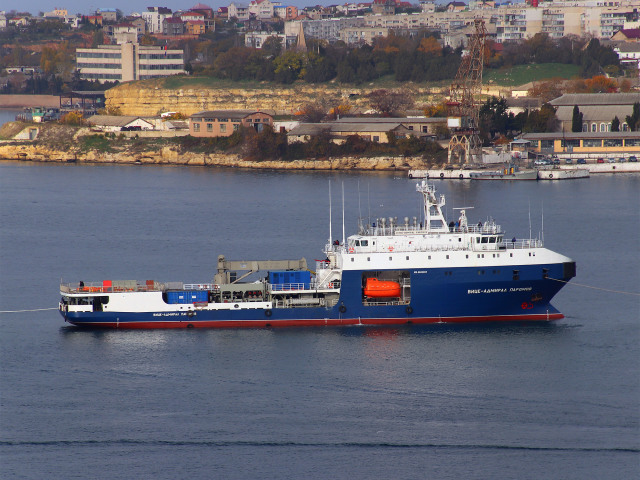
 Hole
Hole
